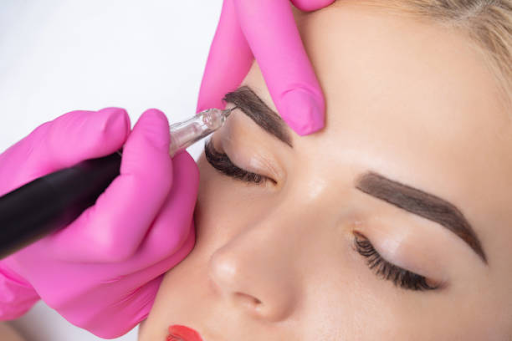Microblading is a popular technique for achieving perfectly shaped eyebrows, but ensuring they look their best over time requires careful aftercare. Many people unknowingly make simple mistakes after the procedure, which can lead to fading, unevenness, or even infection. By understanding these common mistakes, you can take proactive steps to protect your investment and enjoy beautiful, long-lasting results. This article explores the most frequent errors people make after microblading and provides practical advice on how to avoid them.

Introduction to Microblading Aftercare
After microblading, the skin around your brows needs time to heal and set the pigment correctly. During this time, several factors can affect the final outcome of your brows. Following proper aftercare is key, but it’s just as important to understand what you should avoid. Each mistake, from scratching the area to skipping sun protection, can affect the pigment’s longevity and appearance.
Touching or Scratching the Brows
One of the most common mistakes after microblading is the urge to touch or scratch the brow area. Although it’s natural to feel some itchiness or tenderness as your skin heals, scratching can disrupt the pigment and introduce bacteria, leading to potential infections. It’s essential to resist the urge to touch your brows frequently. Even clean hands carry oils and bacteria that can compromise healing.
- Avoid direct contact with the brows.
- Use a clean tissue to gently blot any excess moisture.
- If itching is intense, consult your technician for safe relief options.
Why Avoiding Touching Is Crucial
By touching or scratching your brows, you risk disturbing the pigment and potentially causing unevenness. Microblading creates tiny incisions that need a clean, undisturbed environment to heal. Touching not only disrupts the pigment but also exposes your skin to bacteria, raising the risk of infection. Keeping your hands away from the brows ensures the pigment remains intact and the area heals without complications.
Using Unapproved Products
Another common mistake is using skincare or makeup products that are not recommended by your microblading technician. Certain ingredients, especially those found in anti-aging or acne products, can interfere with healing. Harsh chemicals or exfoliants can irritate the sensitive area around your brows, leading to discoloration or premature fading. Be mindful of product labels and follow your technician’s advice.
Exposing Brows to Water or Sweat
Exposure to water or sweat is a common error that can cause pigment loss or uneven color. The microbladed area must be kept dry in the early days following the procedure to allow the pigment to settle properly. Activities such as swimming, sauna sessions, or intense workouts should be avoided until your technician confirms it is safe.
Ignoring Sun Protection
Direct sunlight can alter the color of the pigment and cause fading, making it essential to protect your brows from UV exposure. During the first few weeks, avoiding the sun altogether can help preserve the pigment’s color and vibrancy. Later, using sunscreen is crucial to maintaining the appearance of your brows over time.
| Stage | Recommended Care | Mistakes to Avoid |
|---|---|---|
| Day 1–3 | Keep area clean and dry, apply ointment as directed | Touching, exposure to water |
| Day 4–7 | Avoid scratching, use tissue for blotting if needed | Scratching, applying makeup |
| Day 8–14 | Continue keeping brows dry, apply sunscreen after healing | Sun exposure, using harsh skincare products |
Using Sunscreen After Initial Healing
Once your brows have fully healed, applying sunscreen helps to protect the color and preserve your results. Choose a mineral-based sunscreen that is gentle and fragrance-free. Sunscreen creates a barrier that shields the pigment from UV rays, reducing the risk of fading and maintaining the vibrant look of your brows over time.
Skipping Follow-Up Appointments
Many people underestimate the importance of follow-up appointments after microblading. These appointments allow your technician to assess how well your brows have healed and make any necessary touch-ups. Skipping these visits can result in less-than-perfect results, as some areas may require additional pigment to achieve the desired look. Follow-ups are usually recommended 6–8 weeks after the initial procedure to ensure your brows look their best.
- Follow-up appointments allow for adjustments to color and shape.
- These visits help correct any uneven areas.
- Your technician can provide further aftercare advice specific to your healing process.
Conclusion
Avoiding these common mistakes is essential for achieving beautiful, lasting results after microblading. Each phase of the healing process requires mindful care and a commitment to following aftercare instructions. By staying patient, protecting your brows from sun exposure, and avoiding unapproved products, you can enjoy fuller, more defined brows that enhance your overall look. Proper aftercare, combined with regular follow-up visits, helps to extend the life of your microblading results.
FAQ
- How long should I avoid water after microblading? It’s recommended to keep brows dry for about 7–10 days post-procedure.
- Can I use makeup on my brows during healing? Avoid makeup until your brows are fully healed to prevent irritation.
- When can I resume my normal skincare routine? After approximately two weeks, but consult with your technician for specific advice.
- Is itching normal after microblading? Yes, mild itching is part of healing, but avoid scratching to prevent complications.